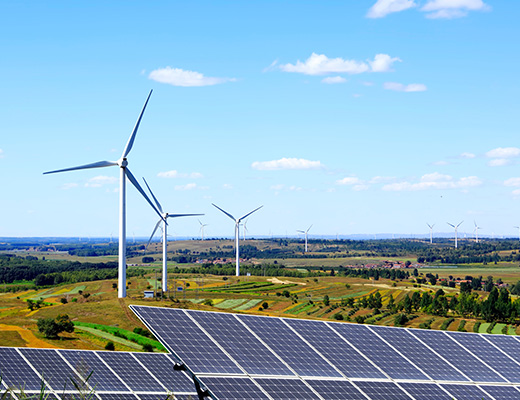While these investments may face regulatory delays, market fluctuations, and infrastructure bottlenecks, strong cash flows, prudent financial management, and sustained investor confidence will support stability across the three sectors.
As part of the current transformations, India’s renewable energy, roads, and real estate sectors are expected to attract significant capital, according to the country’s leading ratings agency, Crisil Ratings. While renewable energy is witnessing a surge in storage-linked capacities, the roads sector is focusing on monetisation, and real estate is seeing premiumisation in residential projects alongside a growing influx of global capability centres (GCCs) in commercial spaces.
Despite these shifts, strong investment growth remains a constant across all three sectors, said Krishan Sitaraman, Chief Ratings Officer, at a media webinar during the third edition of the Crisil Ratings Annual Infrastructure Summit on Monday. “Over this fiscal and next, investments may rise at about 15 per cent annually, reaching nearly ₹17.5 trillion compared with about ₹13.3 trillion in the preceding two fiscals. While adapting to new business dynamics will pose some challenges, credit profiles of Crisil-rated developers and projects would remain resilient.”
To address power supply intermittency, India is transitioning towards hybrid or storage-backed capacities, enabling round-the-clock power scheduling. Of the nearly 75 GW capacity to be added in this and next fiscal, hybrids will account for about 37 per cent—a sharp rise from the 14 per cent share in the preceding two fiscals.
Road infrastructure, a key economic multiplier, requires a boost in project awarding to sustain growth. For the National Highways Authority of India (NHAI) to return to its peak of nearly 6,000 km per year in awards and execution, private capital infusion through asset monetisation is crucial. The share of monetisation in NHAI’s funding sources is expected to grow to about 18 per cent in this fiscal and next, compared with 14 per cent in the preceding two fiscals. A monetisable asset base worth ₹3.5-4 trillion lends confidence to this outlook.
Residential real estate demand is stabilising after a post-pandemic recovery, with revenue growth for developers expected to remain steady at 10-12 per cent this fiscal and next. While volume growth is rationalising, premium projects continue to drive realisations. In commercial real estate, net leasing growth is projected at 7-9 per cent, with annual demand poised to exceed 50 million square feet by fiscal 2027, driven by India’s cost-efficiency for GCCs and steady domestic sector expansion.
Growth Despite Roadblocks
Challenges remain across these sectors. In renewables, transmission infrastructure ramp-up is underway, with a total capital expenditure of nearly ₹1 trillion in this fiscal year and the next—double the spending in the preceding two fiscal years. However, delays due to right-of-way issues, approvals, and equipment shortages could pose challenges. In roads, monetisation has been inconsistent, with about 35 per cent of toll-operate-transfer bundles not being awarded. Approval delays and valuation mismatches could slow sectoral growth. In residential real estate, new launches exceeding demand may push inventory levels to 2.9-3.1 years this fiscal, up from 2.7 years in fiscal 2024, potentially increasing developer debt.
Despite these challenges, credit risk profiles across renewables, roads, and real estate remain strong. Manish Gupta, Deputy Chief Ratings Officer, Crisil Ratings, noted, “Robust operating performance over the past few fiscals and strong cash flows have kept debt levels under control. Healthy investor interest, evident from equity raises and asset monetisation, has enabled significant deleveraging. Cumulatively, nearly ₹2.1 trillion of equity capital has been deployed in these sectors over the past two fiscals, supporting credit profiles.”
While debt will rise in renewables due to high capex intensity, resilient operations will maintain stable net debt/Ebitda at about seven times over this fiscal and next, with a healthy debt service coverage ratio (DSCR) of 1.2-1.3 times. Steady cash flows and prudent capital structures will ensure a DSCR of 1.5-1.6 times for operating toll road assets. Road developers have significantly deleveraged, with total outside liabilities to tangible net worth expected at 0.6-0.7 times. Strong sales and collections, along with asset-light models, have strengthened balance sheets in residential real estate, improving the debt-to-cash flow ratio to 1.1-1.3 times. Commercial real estate credit metrics are also set to improve, with a DSCR of 1.9-2.0 times expected over this and next fiscal.
Infrastructure investment trusts (InvITs) and real estate investment trusts (REITs) have further bolstered credit profiles by pooling cash flows, capping leverage, and ensuring regulatory oversight. While geopolitical risks could moderate investment growth, steady cash flows and strong balance sheets should keep credit profiles resilient across these sectors.


